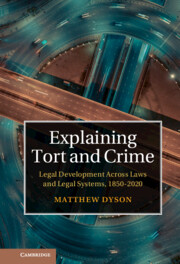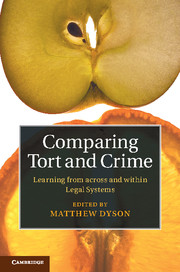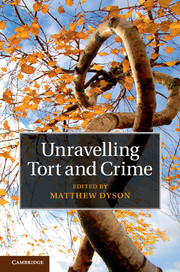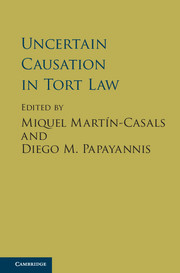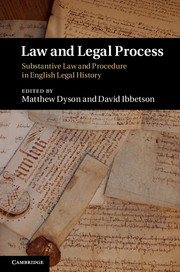Explaining Tort and Crime
Tracing almost 200 years of history, Explaining Tort and Crime explains the development of tort law and criminal law in England compared with other legal systems. Referencing legal systems from around the globe, it uses innovative comparative and historical methods to identify patterns of legal development, to investigate the English law of fault doctrine across tort and crime, and to chart and explain three procedural interfaces: criminal powers to compensate, timing rules to control parallel actions, and convictions as evidence in later civil cases. Matthew Dyson draws on decades of research to offer an analysis of the field, examining patterns of legal development, visible as motifs in the law of many legal systems.
- Traces almost 200 years of history to demonstrate how comparative law and legal history can be used to explain legal development, putting the law of today, yesterday and tomorrow in context
- Employs a systematic use of comparative law, using examples from more than ten legal systems around the world on a key but understudied area of law
- Builds upon the work of Unravelling Tort and Crime (2014) and Comparing Tort and Crime (2015) to show key aspects of how tort, crime, and how the relationship between them has developed
Reviews & endorsements
‘Explaining Tort and Crime is a terrific book, and we are deeply in Matt Dyson’s debt. Not only does it realise the ambition of promoting scholarship on tort and crime, it also makes a major contribution to the literature on doctrinal development and change in the law. It has taught me a great deal. One can ask and expect no more.’ Peter Cane, Criminal Law and Criminal Justice Books
Product details
July 2022Adobe eBook Reader
9781009302937
0 pages
This ISBN is for an eBook version which is distributed on our behalf by a third party.
Table of Contents
- Part I. Setting the Scene: Introduction and Methods for Explaining:
- 1. Introduction
- 2. Organising tort and crime
- Part II. Mental States and Careless Acts: The Development of Fault Doctrine in Crime and Tort:
- 3. Fault doctrines in criminal law
- 4. Fault doctrines in tort law
- 5. Explaining the criminal and tortious developments in fault doctrine
- Part III. Procedures Interfacing Tort and Crime:
- 6. Claims and formats
- 7. Timing rules
- 8. Criminal judgments in the civil law
- Part IV. Conclusions:
- 9. Patterns of development
- 10. Conclusions.

